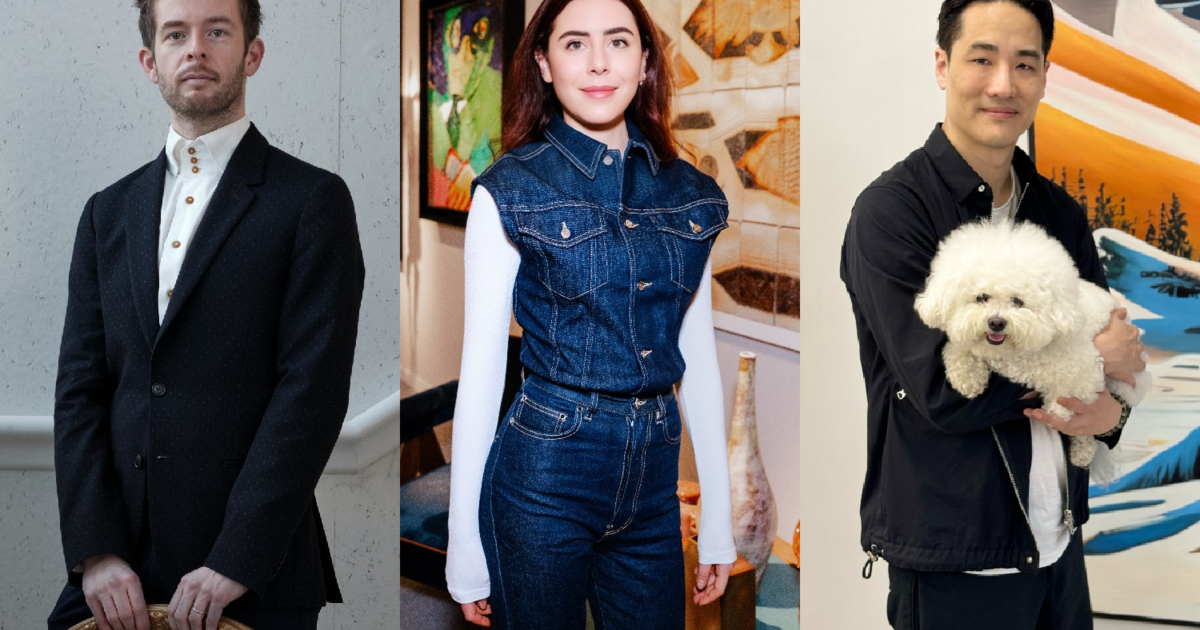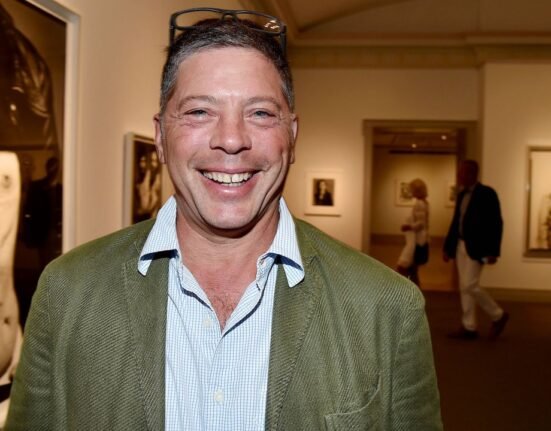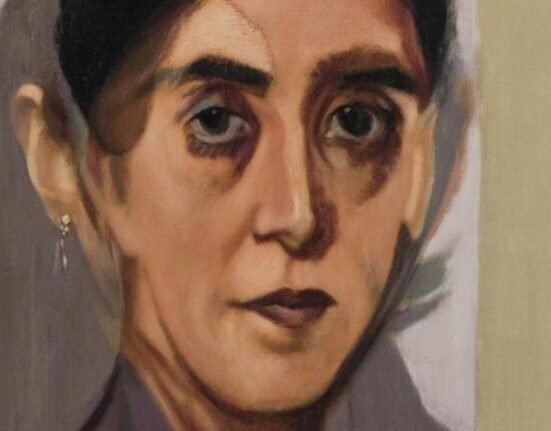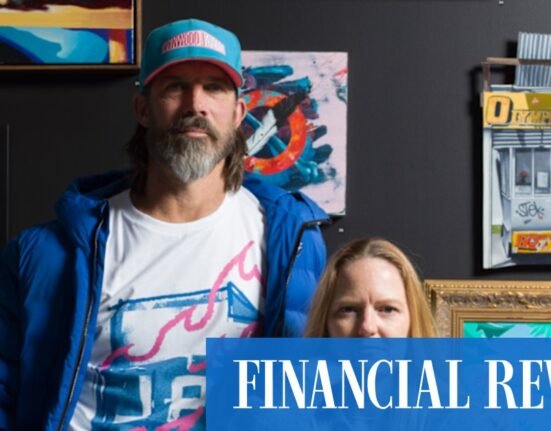Art Market
Maxwell Rabb
Last year was a rocky one for the secondary market. Sotheby’s, Christie’s, and Phillips—broad public barometers of the market’s performance—all reported a dip in sales for 2023, characterized by persistent economic uncertainty.
In 2024, there are more murmurs of positivity. Though economic growth is broadly forecast to taper and geopolitical tensions continue to persist, falling inflation and the widespread predictions of lower interest rates are providing cause for optimism, a sentiment mirrored by positive noises from recent art fairs.
Three months into 2024, insights gathered from secondary-market dealers—spanning the spectrum from London to Hong Kong—highlight a nuanced picture. On one side, there’s a clear gravitation towards well-established artists and high-value artworks among long-time collectors, seen as stable investments during uncertain times. Conversely, a younger, digitally savvy demographic is emerging, seeking new talents and driving up prices and waitlists for in-demand artists.
Universally, the dealers that Artsy spoke to underscored the resilience of the art market and its capacity for rejuvenation, emphasizing that such a recovery necessitates innovation from galleries and gallerists. “The art market is quickly adapting to attract a younger audience.…This shift in taste demands new roles and skills, particularly in digital marketing, online sales, and customer engagement,” said John Russo, CEO of Maddox Gallery.
Here, we learn from six art dealers on the trajectory of the secondary market in 2024.
John Russo
CEO, Maddox Gallery
London
Portrait of John Russo. Courtesy of Maddox Gallery.
Maddox Gallery CEO John Russo has noticed a greater divide between new and established collectors. The London gallery, which opened its flagship space in 2015, often bridges the gap between these collector bases. It offers works from blue-chip artists such as Jean-Michel Basquiat and Keith Haring, alongside rising names such as Ross Muir and Cooper.
“Established investors are favoring well-known artists and high-value artworks, perceiving them as more stable investments during uncertain times,” Russo told Artsy. On the other hand, he shared that younger collectors with higher risk tolerance are focused on emerging artists such as Duncan McCormick and Albert Willem.
Albert Willem
Grandpa in Wonderland, 2023
Maddox Gallery
“The art market is quickly adapting to attract a younger audience,” Russo told Artsy. He highlighted Deloitte’s Art and Finance report, which revealed that 83% of younger collectors now view art as a reliable investment, up from 50% last year. Additionally, the report shows that 61% of young collectors are diversifying their portfolios, and over 50% see art as a hedge against economic uncertainty, showing financial insight. “This shift in taste demands new roles and skills, particularly in digital marketing, online sales, and customer engagement,” he added.
Russo also believes data is now at the forefront of secondary-market sales, allowing dealers and collectors to better understand market fluctuations. “Online databases and auction results are facilitating self-regulation, including fair market pricing. In response, pricing strategies are adapting,” he said.
The London-based dealer sees works by the likes of Jordy Kerwick, Robert Nava, Niall Campbell Strachan, and The Connor Brothers holding momentum this year.
Salomé Limbach-Dumas
Co-Founder, Dumas Limbach
Paris
Portrait of Salomé Limbach-Dumas. Courtesy of Dumas Limbach.
“In terms of trends, we can only note a genuine interest on the part of collectors in artists who have been established for many years,” said Salomé Limbach-Dumas, the co-founder of the French gallery Dumas Limbach, a stalwart of the French secondary market for modern, post-war, and contemporary art. The gallerist runs two spaces in Paris and Saint-Tropez. She listed Pierre Soulages, Jean Michel Pincemin, Claude Viallat, Serge Poliakoff, and César Baldaccini as artists with continued momentum from last year.
“We also noted a renewed interest in ceramics,” Limbach-Dumas continued. “In particular, our American collectors fell under the spell of the Vallauris school (as Jean Derval and, moreover, Roger Capron).”
César
ODILE, 1987
Dumas Limbach
This year, Limbach-Dumas is noticing that the secondary market is becoming less international. “We are still very much in touch with European and American collectors, but the link with the Middle Eastern and Asian scene seems to be weakening somewhat,” she said. However, she admits the gallery is waiting for the Olympic Games in Paris to see if the international event will reinvigorate its global sales.
For the Paris-based gallerist, the beginning of this year is witnessing a continuation of several previous trends, with collectors gravitating towards securing pieces by well-known and established artists. Similarly, newcomers to art collecting choose to “start their collections with sure values,” she said.
Rupert Worrall
Director, RAW Editions
London
Portrait of Rupert Worrall. Courtesy of RAW Editions.
Rupert Worrall, director of RAW Editions in London, observes the secondary art market’s initial adjustments amid global economic concerns. A noticeable shift occurred mid-year in 2023, with sales volume declining but a pivot towards higher-value transactions emerging. “From midway through the year, there was a noticeable decline in the volume of sales, but a concurrent move towards sales of higher-value works for RAW Editions,” Worrall said. The gallery is a standard bearer for contemporary and post-war editions, featuring works from artists like Donald Judd and Bridget Riley.
Despite these changes, prices for established artists remained robust, buoyed by significant museum exhibitions that amplified collector interest in figures like Ed Ruscha and David Hockney.
David Hockney
A Picture of a Landscape in an Elaborate Gold Frame, 1965
RAW Editions
“With the U.K.’s economy improving and falling inflation, we are positive about this year’s outlook,” Worrall said. “I am confident the editions market will remain stable. There will be buying opportunities for collectors, and in those instances, it is important to consider the rarity and condition of the work on offer.”
Phil Ooi
Founder, The BlackWood Gallery
Hong Kong
Yayoi Kusama
Lemon Squash (Kusama 158), 1992
The BlackWood Gallery
Jean-Michel Basquiat
Untitled (Rotterdam) (1982) Skateboard Decks, 2021
The BlackWood Gallery
“What we have witnessed is that there has been a flock to quality: less speculative buys which fueled previous years’ art market euphoria, and more of a focus on personal enjoyment,” said Phil Ooi, founder of The BlackWood Gallery in Hong Kong. The gallery is known for its hands-on approach to secondary-market dealing, where in recent years, the space has offered more advisory and education opportunities for its collectors. This shift indicates a more discerning approach among collectors, prioritizing the safer value in art over the potential of secondary-market artists garnering momentum.
Emma Webster
Little Black Cloud, 2021
The BlackWood Gallery
That said, Ooi shared that market momentum is particularly strong for Ming Ying and Artsy Vanguard 2023–2024 alum Li Hei Di, both Royal College of Art graduates, indicating a high demand and promising future for these emerging artists. “We love all her works and believe the future is very bright and definitely a name to look out for,” he said of Ying.
Following this purchasing trend towards quality and longevity, The BlackWood Gallery is enhancing its advisory services in 2024 to support clients in refining their collections, focusing on guiding collectors through changes in taste and market trends. “Despite the slowdown, throughout 2023, collectors have continued to buy, and the demand for artworks has remained very strong,” said Ooi.
Jonathan Freedman
Founder, Art Mavens, LLC
Online
Portrait of Jonathan Freedman. Courtesy of Art Mavens, LLC.
“The fine art print market continues to be resilient and robust, especially for blue-chip works by coveted artists such as Andy Warhol, Roy Lichtenstein, and Keith Haring,” Utah-based art dealer Jonathan Freedman told Artsy. The online gallery specializes in these three aforementioned artists, and Freedman emphasized that available work in good condition is rare to find for artists who are so established.
A sense of resilience frames Freedman’s outlook on the secondary market, where these blue-chip artists retain their relevance among younger and older collectors in the face of economic fluctuations. “Part of the legacies of Andy Warhol and Keith Haring is their ability to span generations,” Freedman said. “Young collectors today enjoy and seek after their work just as collectors did during their lifetime,” he added.
Samson Ko
Co-Founder, Seefood Room and 3 White Dots
Hong Kong
Portrait of Samson Ko. Courtesy of Seefood Room.
In Hong Kong, Samson Ko, the co-founder of Seefood Room and 3 White Dots, believes that the recent market “correction” is causing emerging collectors to reassess the market and their purchasing tastes. “In response to the recession, collectors have evolved their interests faster than ever; emerging collectors who began collecting more figurative artworks are now exploring more abstract and mature images to add to their collections,” he told Artsy. The gallerist started 3 White Dots with Alan Cheung, who handled the secondary market and art advisory. In 2021, the duo opened Seefood Room, a public physical primary gallery.
Ko believes collectors aren’t cutting back on spending but being more selective in the secondary market—specifically, looking for blue-chip artists.
“Going forward, I believe the focus for many collectors is upgrading and cultivating a more mature and long-lasting collection,” Ko said. “The interest in art still grows continually, and proper education for new community members is integral to a healthy and sustainable market growth. Art collectors have different motives to collect, so it is always important to identify and accommodate to their drives.”
MR

Maxwell Rabb
Maxwell Rabb is Artsy’s Staff Writer.
Clarification: The text has been updated to better reflect Maddox Gallery’s program of emerging artists.







